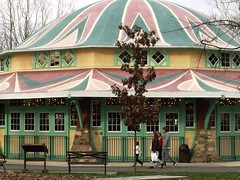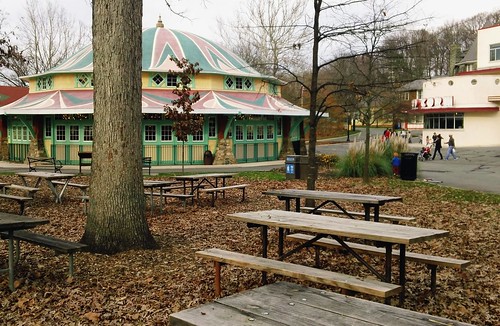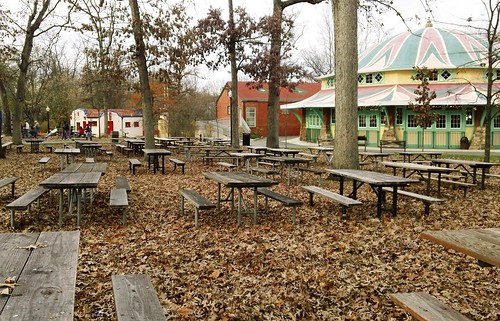The importance of legacy to sustainability

Posted November 28, 2011 at 1:30PM
When we think of “sustainability,” we usually are considering the viability of a place or action into the future – as my friend Steve Mouzon puts it, “can we keep it going in a healthy way into an uncertain future?” But I increasingly think that, when we consider that nourishing the human spirit is just as important as conserving natural resources – we humans are part of this ecosystem, after all – the continuity implied by sustaining something may need to relate to the past as well as to the future.
Preservationists know instinctively the importance of connecting to the past and maintaining a legacy as we go forward. But the integration of the past into the present and future is the hard part. In the case of the built environment, how much do we save and what do we do with it? What do we preserve as is, what do we alter and/or adapt, and what do we allow to be demolished? I’ve written before that both preservationists and environmentalists must be discriminating and wise in asserting our values. If we push our principles to the maximum without awareness of the consequences to other important societal values, we risk losing our credibility, among other things.
If you’re reading this article, chances are that you, too, care about these things, though no doubt there are differences among us as to the details.
It was a bike ride yesterday that brought thoughts about legacy to mind. I stopped with my camera at Glen Echo Park, an old art deco amusement park that is now owned by the National Park Service and managed by a nonprofit organization as a historic site and creative center. There’s a ballroom, a theatre, an arcade (now galleries), a former bumper car pavilion (go back a couple of decades and you might have heard my band play there), and the star of the show, a still-functioning carousel. There are also refreshments, plenty of trees, and picnic tables.
Kids love the place, as you might imagine. There is plenty for them to do, in a great atmosphere. And I can’t help but wonder whether part of Glen Echo’s magic is that it is not, a t least not now, a fully functioning amusement park but mostly an evocation of one. Very little is spoon-fed to its visitors, who must instead engage the place with their own imaginations. And that, perhaps, is exactly what preservation at its best does for all of us.
t least not now, a fully functioning amusement park but mostly an evocation of one. Very little is spoon-fed to its visitors, who must instead engage the place with their own imaginations. And that, perhaps, is exactly what preservation at its best does for all of us.
For me, the feeling is not exactly nostalgia, since I never knew Glen Echo when it was fully functioning, nor any amusement park quite like it. But I get it that places like Glen Echo are part of our shared legacy. I’m connected to it culturally even if not personally. Its appeal has proven to be timeless, and I feel comfortable there in a way that I wouldn’t if I were in a new replica of it or in a modern-day amusement park.
Yesterday that comfort had a lot to do with a well-placed break at mile 23 or so of a 31-mile ride in which I had been pushing the pace. Speaking of transportation, there is also, somewhat sadly, an old, deteriorating trolley car and a segment of track from back when trolleys were Washington’s primary mode of public transportation. (The trolley car is actually from Philadelphia.) Back in the day, the park was the last stop on the line and, I’m told, Washingtonians would head out there after work on summer evenings.
 Also sadly, Glen Echo’s rich history included segregation: it was whites-only for 63 out of its fully operational 70 years. Ugh. Its cultural legacy is obviously very different for African-Americans than for whites. But perhaps important nonetheless. The park opened to all, finally, in 1961.
Also sadly, Glen Echo’s rich history included segregation: it was whites-only for 63 out of its fully operational 70 years. Ugh. Its cultural legacy is obviously very different for African-Americans than for whites. But perhaps important nonetheless. The park opened to all, finally, in 1961.
I find Glen Echo especially evocative in late fall, when the crowds are gone and the leaves are down, opening up the views. The carousel is closed for the season. There is less going on that engages me on its own terms, and more for me to relate to in my own ways.
Why is this important? Another friend, Chuck Wolfe, wrote last year about “reclaiming the urban memory,” and I commented on his essay. Chuck is one of the most talented photographers I know, and he believes the photographic record of times past may provide important clues to unlocking future challenges, including sustainability:
“The Great Recession, climate change and the quest for carbon neutrality have reoriented how we look at cities, the distance between home and work, and the role of the automobile. A simultaneous, street-based nostalgia targets simpler times, a more human scale and an elusive world of accessible neighborhoods often lost in the memories of previous generations. Consider imagery which restores such lost urban memories for those who did not witness modern urban history, and recreates what political writer Alexander Cockburn has termed ‘the lost valleys of the imagination’ . . .
"Of all available resources, amid blogs and information byways, no visual record is more compelling than the archived work of seldom remembered, but innovative documentary pioneers, who left behind breathtaking records of camera artistry.”
Chuck’s full essay, accompanied by archival photos, may be read on his blog myurbanist.
My take is that, in order to pursue sustainability, we must be very careful in choosing what we want to sustain. Doing so with wisdom requires access to the past, and it also requires engaging our imaginations, our spiritual as well as our scientific sides. (Or, as perhaps only Van Morrison might put it, in his majestic “The Beauty of the Days Gone By,” one regards the past “to contemplate my own true self, and keep me young as I grow old.”)
In the case of Glen Echo, fortunately we are not limited to photographs in these important endeavors. If we live in DC, we can ride there on a bike and see it for ourselves.
Move your cursor over the images for credit information.


